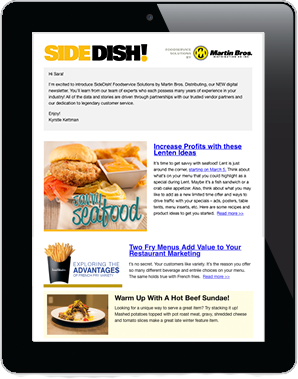Food service is a big deal for senior living facilities. Healthcare Menus are amenities that seniors and their families evaluate as they choose a facility to call home, and many look forward to dining as a time to enjoy a great meal and good company. Here are seven ways to ensure your community successfully plans your menu to attract residents and keep them delighted.
1. QUALITY MENU PROGRAM
- Tested recipes designed for large-scale production.
- Comprehensive, detailed nutrition on 30 or more nutrients.
- Real-time cost analysis reporting and tools using the ingredients you actually purchase
- Multiple tool and reporting functions.
- Many pre-planned menu options designed by dietitians.
- Simple and complete customization of menus and healthcare recipes.
2. VARIETY
- Not everyone likes the same types of food, and everyone likes variety. Include a variety of options to please more palates.
- Menus must reflect the religious, cultural and ethnic needs of residents as well as their preferences and diets.
3. FOOD COST OPTIMIZATION
- Use a menu program that 1) allows you to pick recipes and ingredients that optimize your dollar and 2) provides real food costs on the items you are purchasing.
- Work with a dietitian for ideas to enhance and optimize your menu based on your food cost goals.
4. EQUIPMENT
- Consider your equipment when writing your menu. Plan to use recipes and ingredients that work with your equipment. For instance, don’t plan for an entrée, potato side dish and dessert that all need to be in the oven at the same time if you don’t have enough oven space. Or, for example, don’t plan for too many ingredients that will need to come in frozen if you are limited on freezer space.
- Inventory and replenish small equipment as needed. Make sure staff have what they need to do their job effectively, i.e. sharp knives, un-pitted sheet pans, enough scoops of varying sizes and pans without carbon build-up.
5. STAFFING LEVEL & ABILITY
- Pick recipes and ingredients that work with your staffing levels and abilities. If your evening cooks are all high school students, you may need to avoid entrées where a meat slicer is needed, for example. Or, for instance, if you are tightly staffed on weekends, you may want to plan the menu to include more convenience items instead of scratch.
6. REGULATORY COMPLIANCE
- Know the local, state and federal menu regulations for your type of establishment.
- Use a menu program that allows you to generate the reporting information needed for regulatory compliance.
- Train your staff to prepare and follow the menus within compliance.
7. PLATE PRESENTATION
- Add color and appeal to a bland-looking plate with a garnish.
- Include the garnish on the menu so staff don’t skip the garnish altogether or have to come up with a garnish idea on their own.
- Combine different colors and textures together on the plate. Audit your menu to make sure you don’t have several soft, colorless items plated together, like creamed chicken over mashed potatoes with whipped cauliflower, for example.
- Use tableware and linens that add color and are clean, unchipped and inviting.







